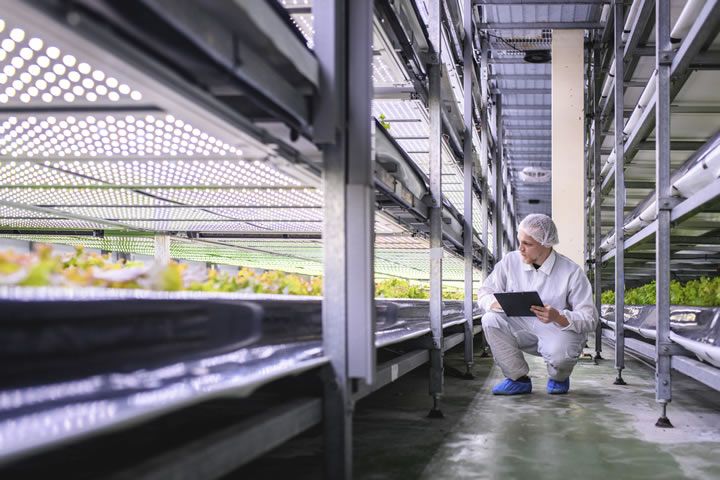Anyone who wants to realize applications in which objects with a wide variety of characteristics – such as vegetables or fruit – are to be reliably recognized, cannot afford to ignore image processing with artificial intelligence.
 How image data is changing agriculture
How image data is changing agriculture

Article from | IDS Imaging Development Systems
Being able to control processes more easily and design them more efficiently – these requirements also play an important role for agriculture and the food industry. Factors such as increasing demand from consumers, high standards regarding sustainability and security of supply, as well as the need to produce efficiently, come into direct conflict. Connected devices and automation are therefore becoming more and more prevalent in these sectors. Cameras play an important role here. They support from the optimal application of fertilizers to the visual monitoring of products and growth phases to the processing of food.
A key technology is artificial intelligence. Organic products with different shapes and colors are difficult to describe in the corset of standardized algorithms with which industrial cameras usually work. Anyone who wants to realize applications in which objects with a wide variety of characteristics – such as vegetables or fruit – are to be reliably recognized, cannot afford to ignore image processing with artificial intelligence. Intelligent vision systems for collecting and analyzing information are also a valuable tool when it comes to detecting conditions, making decisions and triggering follow-up processes. To make best us of this technology, AI vision systems that are equally flexible, easy to handle and powerful are required. This is where IDS NXT ocean comes into play.
IDS NXT ocean (www.ids-nxt.com) is a particularly user-friendly end-to-end solution which allows users to create AI-based image processing applications – even with little previous knowledge. Vision apps help to flexibly control which task the embedded vision system should solve; from simple barcode reading to complex AI-based object detection. Thanks to their compact industrial-grade housing and interfaces such as OPC UA, the intelligent IDS NXT cameras can be easily integrated into factory automation. Image processing takes place directly on the camera and can then be transmitted as a result, for example to a machine control system.
Customers are provided with coordinated workflows and all the necessary tools so that they can easily develop application on their own. With the IDS-hosted, cloud-based AI training system IDS NXT lighthouse, they can train a neural network with their own images without any prior deep learning knowledge and without having to install any hardware or software. This is remarkable, because although automation is a defining topic in the agriculture and food sector, only few all-in-one packages for embedded vision with deep learning are available. In many cases, this is still project work, with customers building the systems themselves step by step. IDS Imaging Development Systems removes these hurdles so that even companies without dedicated AI specialists can benefit from the current technical state of the art and keep their competitive edge.
For more information and application examples, please visit https://en.ids-imaging.com/smart-farming.html.
The content & opinions in this article are the author’s and do not necessarily represent the views of AgriTechTomorrow
Comments (0)
This post does not have any comments. Be the first to leave a comment below.
Featured Product


